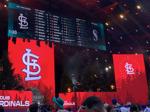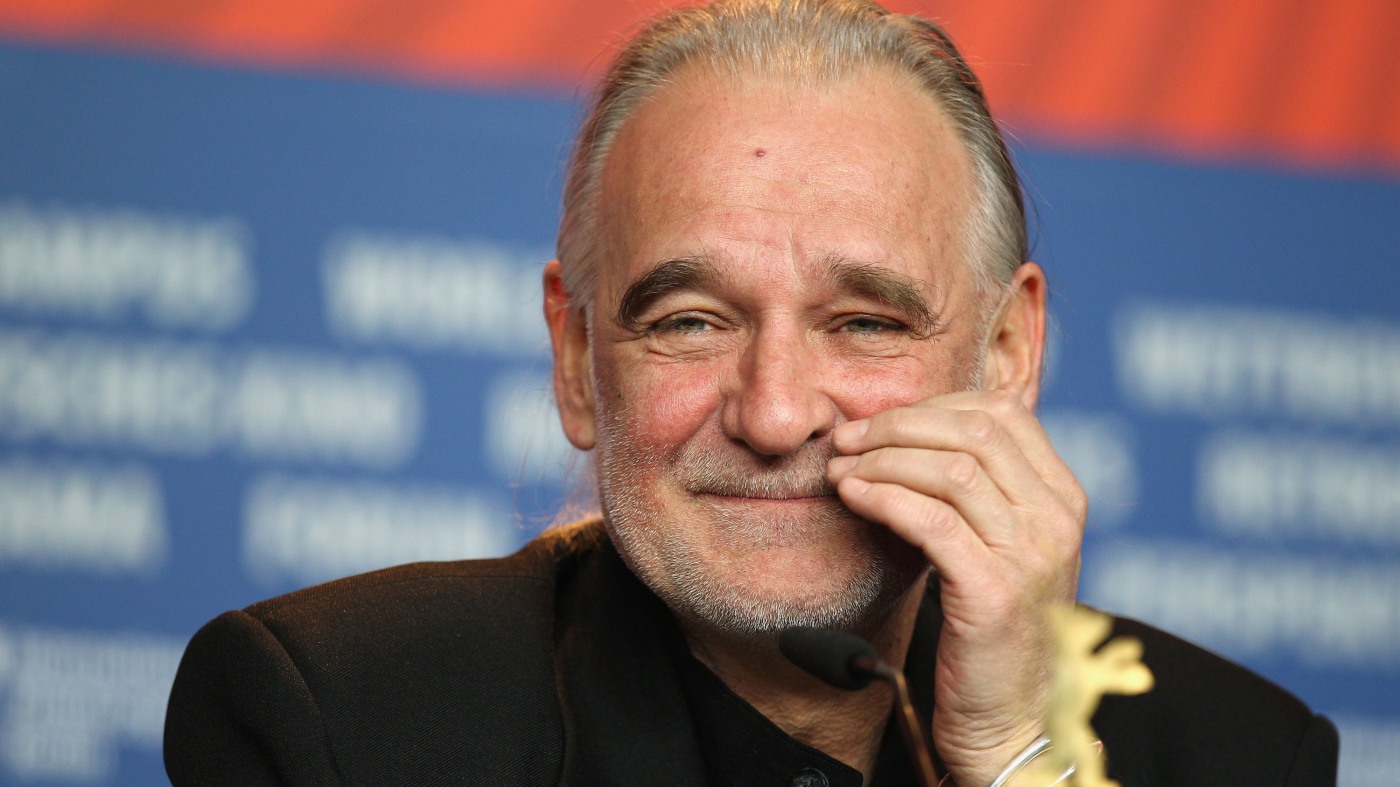JJ Wetherholt, an infielder who played at West Virginia, talks with members of the media moments after the Cardinals selected with the seventh pick in the MLB draft on Sunday, July 13, 2024.
FORT WORTH, Texas — With a bolo tie purchased because he had come all this way to Texas and confidence to match its size, middle infielder JJ Wetherholt fielded his first question as a Cardinal with a smile.
“A baller,” he said when asked what they’re getting in him.
With their highest pick in decades, the Cardinals selected Wetherholt, an advanced hitter with high-average upside, with the seventh pick in the annual Major League Baseball draft. Wetherholt had been projected as a potential No. 1 pick and a likely top-three pick, but with the way the first-round played out he was available to the Cardinals at No. 7.
Wetherholt was the first player in attendance at Cowtown Coliseum for the draft to be selected, so he got to take the floor in a Cardinals jersey and wave to the crowd.
Wetherholt, 21, hit .331 with a .472 on-base percentage and a .589 slugging percentage for West Virginia. He was limited to 36 games because of a hamstring injury that did play a factor where teams slotted him on their draft. As a sophomore, he led the nation with a .449 average and Baseball America described him as the “top pure hitter” on Team USA’s national collegiate team.
People are also reading…

West Virginia’s J.J. Wetherholt runs to first against Youngstown State during an NCAA college baseball game Thursday, March 24, 2022, in Morgantown, W.Va.
A Pittsburgh Pirates fan growing up, Wetherholt told the Post-Dispatch in a quick interview following the pick that it was time to “flip that script” and root for the Cardinals.
Asked to describe his game, he called himself “a five-tool player” who can play anywhere on the field.
The No. 7 pick this year has an assigned slot value of $6,823,700. That is nearly 70% of the Cardinals’ total purse for this year’s draft and it sets the stage for one of their largest bonus offers ever to a first-round pick.
Teams can go below or above the slot assigned. Teams are assessed a fine if their total spending on draft bonuses goes above an assigned purse. The Cardinals are one of four teams that have gone beyond their bonus limit in each of the past 12 years and paid the tax. Their total spending for this year has been assigned a cap of $10,213,000 before they pay the overage tax.
The Cardinals landed the seventh pick after finishing with the fifth-worst record in the majors in 2023. That gave them the fifth-best odds of the first overall pack in the draft lottery. They actually slipped in the lottery, leapfrogged by division rival Cincinnati, which landed the No. 2 pick despite having a better record in 2023 than the Cardinals.
The Reds drafted Wake Forest ace Chase Burns, a pitcher who the Cardinals also had high views of entering this past collegiate season. Burns, a right-hander, went 10-1 with a 2.70 ERA in 16 starts and he struck out 191 batters in 100 innings.
With the No. 1 pick, Cleveland selected infielder Travis Bazzana out of Oregon State. He was born and grew up in Australia before coming to Oregon to play college baseball, and in his junior year he hit .407 with a .911 slugging percentage. He hit 28 homers for the Beavers in 60 games and he reached base nearly 57% of the times he came to the plate.
In 2023, Pittsburgh selected pitcher Paul Skenes with the first pick, and a year later he’s set to start Tuesday’s All-Star Game for the National League.
Cardinals assistant general manager Randy Flores speaks with the media via Zoom on Sunday, July 14, 2024, after the Cardinals picked JJ Wetherholt seventh overall in the Major League Baseball draft.
In nine years with assistant general manager Randy Flores at the helm of the draft board, the Cardinals had not picked higher than 18th, let alone top.
The selection Sunday night was the Cardinals’ highest since 1998, when they took outfielder J. D. Drew with the fifth pick. Drew made his big-league debut later that season on the night Mark McGwire hit his 62nd homer of the summer, and the selection of Drew continued to pay off for the Cardinals for another 25 years.
He was the centerpiece of a 2003 trade with Atlanta that netted Adam Wainwright, who went on to become a World Series championship closer and a 200-game winner for the Cardinals.
The No. 7 pick in the draft has been fruitful in recent years with teams selecting aces Clayton Kershaw and Aaron Nola and also impact position players such as Troy Tulowitzki and Prince Fielder. The past three drafts have featured a pitcher selected seventh, and 12 of the past 15 drafts have seen a pitcher taken at No. 7.
This is a breaking news story and will be updated.













































